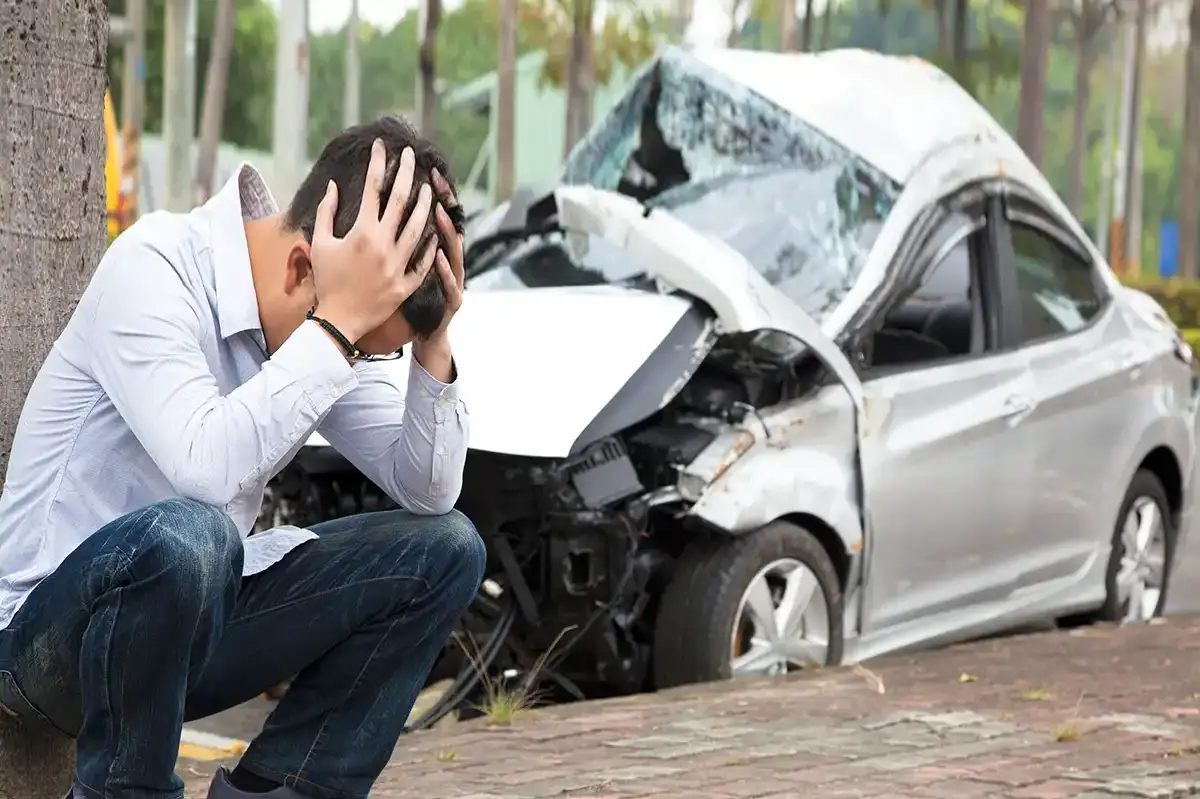Hit-and-run accidents are all too common in Florida, often leaving a trail of devastation and shattered lives in their wake. These reckless incidents occur when a driver involved in a car accident chooses to flee the scene instead of taking responsibility for their actions.
Oftentimes, the victims are left to cope with their physical and emotional injuries while the responsible party evades accountability.
At Redondo Law, we believe every driver has a personal responsibility to drive safely and adhere to traffic laws while traveling on Florida roads. When they breach that responsibility, they need to be held accountable.
That’s why Miami car accident attorney Mike Redondo has dedicated his practice to seeking justice and compensation for accident victims injured by someone else’s negligence.
Statistics on hit-and-run accidents
According to recent data published by the Foundation for Traffic Safety, there were 737,100 hit-and-run accidents in 2015 alone, equating to 1 every 43 seconds. Additionally, these accidents resulted in 2,049 fatalities.
In Florida, hit-and-runs have remained steady in recent years, with around 25% of all accidents being hit-and-run accidents. According to data from Florida Highway Safety and Motor Vehicles, from 2015 to 2022, there have been more than 816,000 hit-and-run crashes in Florida that resulted in 1,878 fatalities.
Why do drivers hit and run?
Drivers may choose to flee the scene of an accident for various reasons, including:
- Lack of insurance. Drivers who do not have the required insurance or have inadequate coverage may choose to flee to avoid potential financial liability.
- Intoxication or impairment. A driver who is under the influence of alcohol or drugs may panic and flee to evade potential DUI charges or other related penalties. This is especially true if they’re going through a divorce and fear that a DUI could cause them to lose custody of their children. Similarly, drivers with certain careers may be concerned that a DUI could cause their professional licenses to be revoked.
- Outstanding warrants or legal issues. A driver with outstanding warrants or involvement in other illegal activities may choose to flee to avoid being caught or identified by law enforcement.
- Driver’s license issues. Individuals who do not possess a valid driver’s license or have a suspended or revoked license may choose to flee to avoid additional legal trouble.
When is a hit-and-run considered a felony?
Hit-and-run accidents are considered a felony in Florida any time an injury is involved. Depending on the severity of the injury, the punishments can range from 5 years in prison to up to 30 years if the victim dies.
Penalties for leaving the scene of an accident
Nearly 25% of Florida car crashes involved a hit and run.
In Florida, it’s illegal to leave the scene of an accident without exchanging information with the other driver or notifying the police. Leaving an accident scene transforms the situation into a criminal investigation, carrying various penalties if apprehended.
Hit & run penalties
| Case | Classification | Penalties |
|---|---|---|
| Property damage | Second-degree misdemeanor | Up to 60 days in prison, $500 fine |
| Injuries | Second or third-degree felony | License revocation (min. 3 years) Up to 5 years in prison, $5,000 fine |
| Fatalities | First-degree felony | License revocation (min. 3 years) 4-30 years in prison, $10,000 fine |
Additionally, any intoxicated driver who leaves the scene of an accident will receive a 2-year minimum prison sentence.

As an attorney, I have seen the impact of hit-and-run accidents and the legal landscape evolve. One significant change occurred on July 1, 2014, with the enactment of the Aaron Cohen Life Protection Act, Section 316.027 of Florida Statutes. This Act, named after a 31-year-old father and dedicated cyclist, Aaron Cohen, fundamentally altered how we address these tragic incidents.
Aaron died in a hit-and-run incident involving a drunk driver. The incident in South Florida in February 2012 resulted in the driver receiving only a two-year sentence – less severe than if he had faced a DUI manslaughter charge. The injustice of this outcome sparked a legislative change. With the Aaron Cohen Life Protection Act, the law now imposes a mandatory minimum of four years for drivers convicted of leaving the scene of a crash that resulted in a fatality.
The aim is clear – to ensure serious consequences match the gravity of such irresponsible and devastating actions.
Tragic death after a hit-and-run accident
A 16-year-old girl was jogging in Florida in May 2021 when she was struck and killed by a hit-and-run driver. Her family reported her missing, and her body was later found off the 79th Street Causeway.
The perpetrator, who was driving on a suspended license, thought he’d only hit a guardrail but was later found and arrested for vehicular homicide. The man was sentenced to 4 years in prison and 6 years of probation and community service.
Who pays for damages in a hit-and-run accident?
If a person is struck by a hit-and-run driver and is left with injuries, vehicle damage or both, they have options to cover the costs through their own auto insurance. In Florida, all drivers must carry at least $10,000 in personal injury protection (PIP) coverage and at least $10,000 in property damage liability (PDL) coverage.
However, PIP insurance only covers 80% of your medical costs and 60% of your lost wages, and PDL insurance doesn’t cover damage to your vehicle.
When these types of coverage aren’t enough in a hit-and-run, the following optional insurances would also apply:
- Uninsured and underinsured motorist coverage. Drivers who carry this optional insurance may receive additional compensation for medical bills for themselves and their passengers.
- Collision coverage. This type of coverage is another optional insurance that drivers can use for repairs on their own vehicles in a hit-and-run accident. Policyholders must pay their insurance deductibles in order to use collision coverage if the driver is never located. However, if the driver is found, your insurance company can reimburse you.
Will a hit-and-run accident impact my insurance rates?
Depending on your insurance carrier, your premium may slightly increase after you file a claim for a hit-and-run accident. However, in many cases, your rate may not increase at all after a single hit-and-run accident that wasn’t your fault.
How can I locate a hit-and-run driver?
If you remember even part of the hit-and-run driver’s license, the Department of Motor Vehicles (DMV) may be able to help you find the driver. Recalling the color, make and model of the vehicle can also help.
Witnesses are integral to locating a hit-and-run driver. They might have gotten the license plate number and other information as the driver fled the scene.
What to do after a hit-and-run accident
If you find yourself involved in a hit-and-run accident, it’s crucial to take certain steps to protect yourself and increase the chances of identifying the responsible party. Here are the recommended steps to follow after a hit-and-run accident in Florida:
- Stay at the scene. Do not chase after the fleeing driver. Instead, stay at the accident scene to ensure your safety and the safety of others involved.
- Seek medical attention. If you or anyone else involved in the accident requires immediate medical attention, call for emergency services or seek medical help as soon as possible.
- Contact the authorities. Report the hit-and-run accident to the police. Provide them with all the information you have gathered, including a description of the vehicle and any available details about the driver.
- Document the information. Try to gather as much information as you can about the incident. Take note of the details such as the make, model and color of the vehicle that hit you, the license plate number, if visible, and any distinguishing features or damages on the other vehicle.
- Take photos of the scene. Take photos or videos of the accident scene, capturing the location of the vehicles, damages and any other relevant details. This visual evidence can be helpful for insurance purposes and potential legal proceedings.
- Talk to witnesses. Look for any witnesses who may have seen the accident. Ask them about any relevant details they remember that may help identify the other car/driver and collect their contact information so that they can provide statements or testify later if needed.
- Notify your insurance company. Contact your insurance company to report the hit-and-run accident and provide them with the necessary information. They can guide you through the claims process and assist with any applicable coverage.
- Consult with an attorney. Consider consulting with a personal injury attorney who specializes in hit-and-run accidents. They can advise you on your legal rights, help gather evidence, and assist with any legal actions that may be necessary.
Since Florida is a no-fault insurance state, your insurance company is generally responsible for paying for your medical expenses and lost wages after an accident up to the limitations of your coverage, so the initial process of collecting compensation will be similar whether the driver leaves the scene or not.
Contact a Miami hit-and-run accident attorney
Victims of hit-and-run accidents are often left with unexpected financial burdens that leave them feeling angry and confused. While the situation may feel hopeless, rest assured that you might still have options. Reach out to an experienced Miami hit-and-run attorney to discuss your case and find out what can be done to protect your rights.
At Redondo Law, attorney Mike Redondo has a proven track record of successfully representing those injured through the negligence of others, always placing client satisfaction above all else. To better help his clients and increase access for anyone who’s been injured in an accident, Mike speaks both Spanish and English and is happy to offer a free, comprehensive evaluation to potential clients.
Contact us today so we can help you get the compensation and justice you deserve.
Additional hit-and-run resources
Below are some additional resources that may be helpful if you’ve been involved in a hit-and-run accident in Miami-Dade area:
Miami-Dade
county – Traffic
View an interactive map of current Miami-Dade county traffic accidents.
Hit and run accidents
in Florida
Hit-and-run car accidents can change your life in the blink of an eye, causing injuries or property damage. Know your options and how to find a Florida lawyer.
Post-incident
report
Free post-accident report form to keep in your glove compartment. Take photos of the accident scene and the car damage. These will be included as exhibits by your lawyer.

